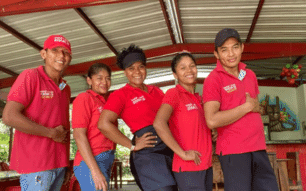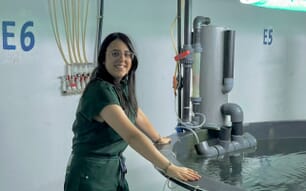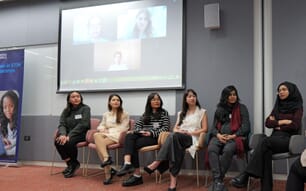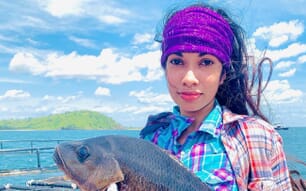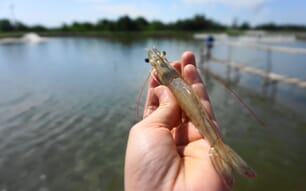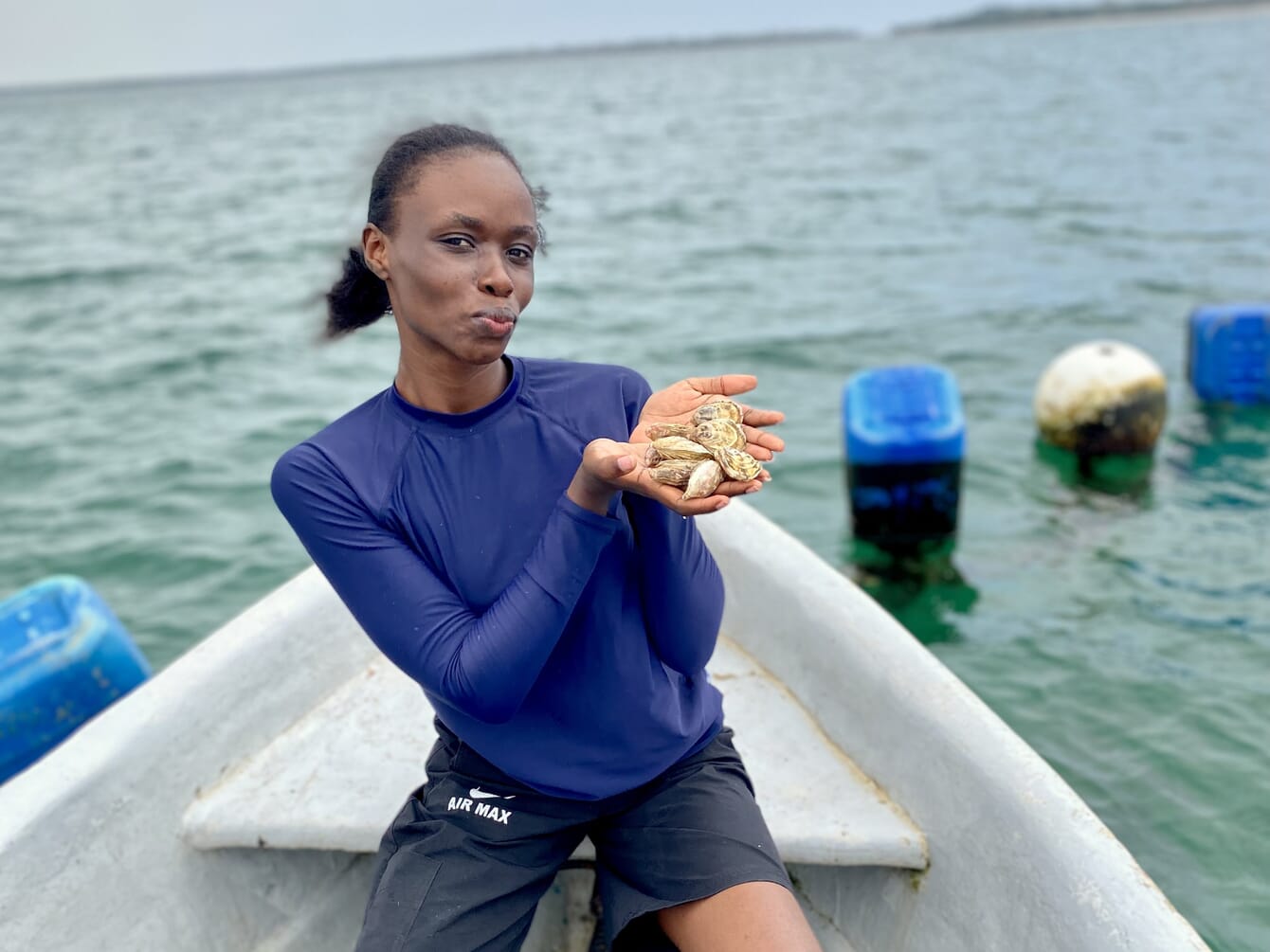
© Gloria Justin
Can you tell us what led you to start oyster farming in Kenya?
I am a fisheries and aquaculture graduate from Maseno University. After graduation, I secured a position as a research assistant at an oyster farm in the Middle East. At the time, the world was navigating the challenges of a global pandemic, with closed borders and a shortage of skilled workers. This unique situation required us to quickly adapt and learn all aspects of the farm’s operations. As a result, I advanced rapidly within the organisation, gaining comprehensive experience in the entire oyster farming process - from nursery management to packaging.
While in this company, I also gained valuable insights into the global oyster industry. Interestingly, countries with the highest oyster consumption, such as Canada, Japan and France, often lack the ideal conditions and resources to farm oysters fast. However, in the UAE, even under extreme heat, Pacific oysters were farmed 50 percent faster than the global average. I concluded that they would grow even faster in the pristine waters of Kenya, so I decided to return and establish an oyster farm.
How did you identify the opportunity to farm oysters in the region?
When people think about aquaculture in Kenya they most immediately associate it with tilapia or catfish - primarily tilapia farmed in Lake Victoria. However, many remain unaware of the immense potential of our ocean, an underutilised resource capable of sustainably farming a wide variety of species.
The wild oyster populations currently supplying the market are under significant pressure, as demand far exceeds supply. This shortage has forced some consumers to rely on costly imports and we saw an opportunity not only to address the demand for oysters but also to shift the narrative of Kenya’s blue economy.
In 2022, myself and my business partner, who has 14 years’ experience in running aquaculture projects, held several stakeholder meetings to better understand the ecosystem we were entering. These discussions gave us the confidence to move forward, and in November 2022, Swahili Coast Farms was officially registered.
The journey since then has been anything but easy. We faced a unique set of challenges that, while frustrating, ultimately laid the groundwork for our success. As the first commercial oyster farm in Kenya’s ocean, securing the necessary permits and approvals was a lengthy process. It required significant time and effort to help various stakeholders, government agencies, and other authorities understand the business and its potential environmental and societal impact.
In June 2024, we finally received the last approval letter and placed our first order for oyster spat from France. By December 2024, we were proudly supplying oysters to hotels in Diani.
What is the size of your farm, and how many oysters do you produce annually?
Through Kenya Fisheries Service we have a 10-hectare concession. We have two longlines floating in the ocean that can hold 200 nets of oysters – the equivalent of 7 tonnes. We are currently fundraising to add at least eight more longlines.
We buy the seed from France between the sizes of 4mm-8mm, quarantine them for a minimum of 24 hours before stocking them in nets and hanging them offshore. Periodically, depending on the size of the oysters, we tumble them: for grading, removing predators, removing mortalities, taking growth measurements and updating stock.
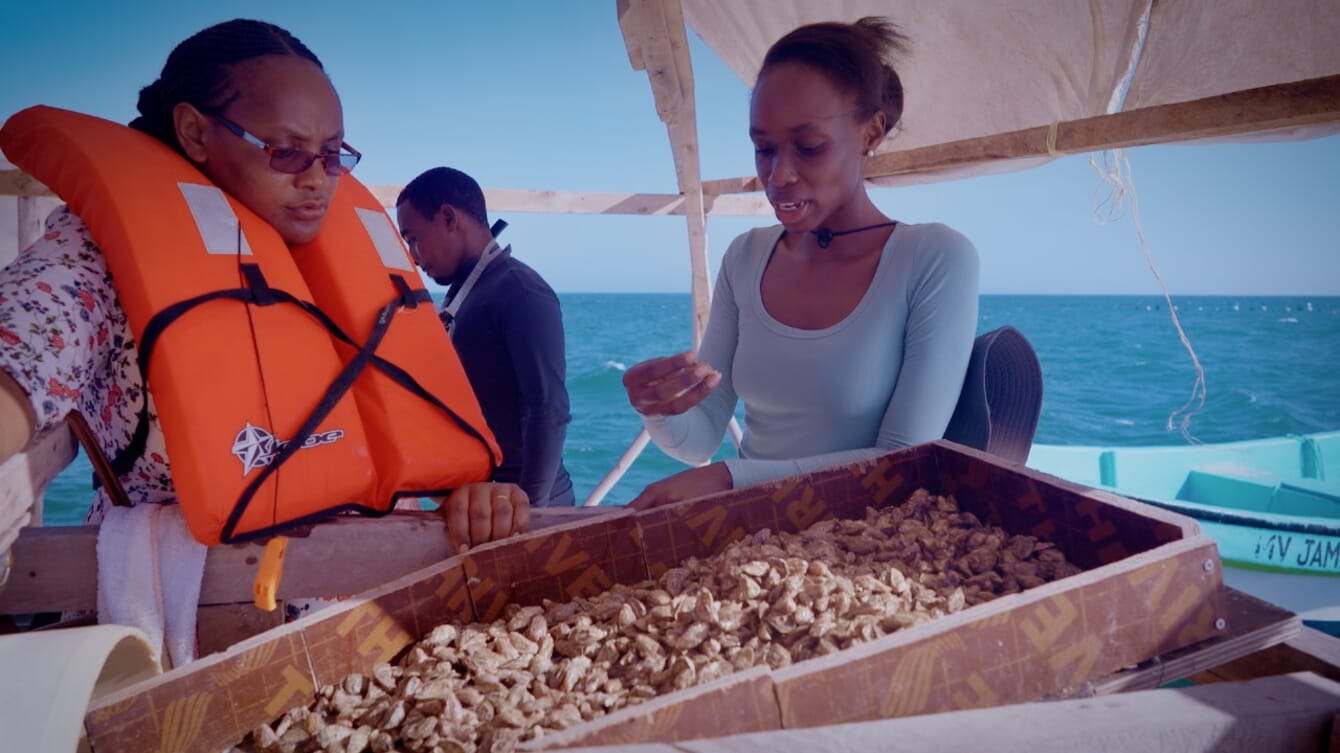
© Gloria Justin
What are the main challenges you face in oyster farming?
- Lack of the right infrastructure in the market, we have had to purchase the majority of our material and equipment from other parts of the world.
- Limited knowledge of the kind of expertise we need to grow the oysters.
- Regulatory hurdles and the slowness of acquiring all the required paperwork can be draining.
- Securing funding
Who are your primary customers?
Our primary source of revenue comes from oyster sales, complemented by offering farm tours. Our main customers include tourists, hotels, restaurants, retail outlets and seafood distributors. The response to our oysters has been overwhelmingly positive. As a unique product, they’ve sparked significant curiosity, with most deliveries selling out within 24 hours. Initially, we were concerned about potential pushback on pricing, but the market quickly reassured us that as long as we deliver a high-quality product, the demand will remain.
Currently, we focus on supplying hotels along the Kenyan coast, with plans to expand into Tanzania in the near future and, eventually, to other international markets. Oysters remain our primary product, but we’ve observed an abundance of other bivalve species thriving around the farm and pontoon. We’re excited about the opportunity to sustainably diversify by introducing another species in the future.
Are there any innovative practices or technologies you’ve adopted to improve farm operations?
Most of the machinery needed for production is only available in the USA or Europe. Due to limited capital, we’ve had to get creative and improvise with locally available materials. For instance, our tumbler was handcrafted by the Gazi community, showcasing their skill and resourcefulness and keeping them actively involved in the operations. Additionally, we’ve constructed a floating platform to streamline offshore operations and provide a unique experience for farm tours. We need technologies that will assist with monitoring and evaluation of environmental impact, data collection, analysis and storage. We intend to allocate funds to this in the near future.
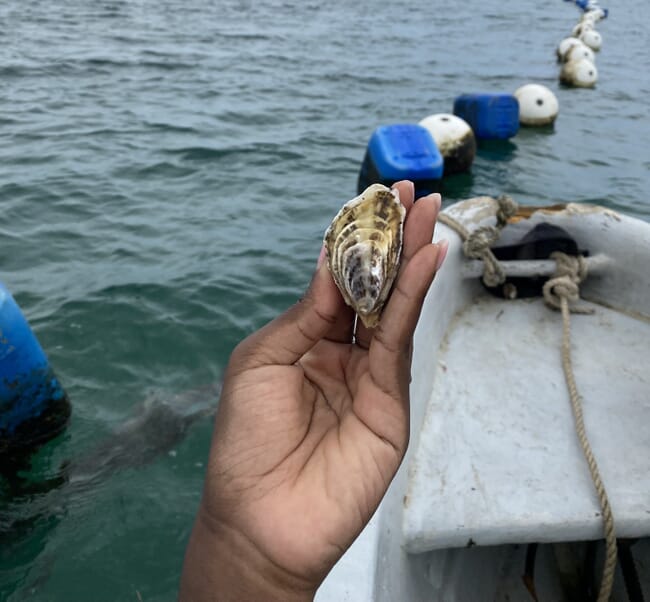
© Gloria Justin
What role does oyster farming in Kenya’s aquaculture industry, and do you see it growing in the future?
Oyster farming is ideally suited to coastal communities. It plays a vital role in empowering these communities, with a focus on women and youth. Traditionally, coastal communities rely heavily on artisanal fishing as their primary source of income. However, during certain months, fish stocks dwindle, leaving many without a reliable livelihood. Through our farm, we aim to provide an alternative source of income, helping to build more resilient and self-sufficient communities. During the high fishing season we notice an influx of people from Pemba island and bordering areas, when the season ends we have managed to absorb some of them into our workforce.
Beyond its socio-economic benefits, oyster farming has a profound positive impact on marine ecosystems. It enhances biodiversity, sequesters carbon, serves as a microhabitat for various species, improves water quality, and protects coastal ecosystems by reducing and preventing erosion.
We take pride in being pioneers in this field and are encouraged by the support and interest from other key industry players. Many have reached out to motivate us, while others are eager to learn how they can venture into oyster farming themselves. Looking ahead, I envision a future where Kenya becomes the world’s leading supplier of oysters, given its vast, untapped ocean resources and a youthful, dynamic workforce.
Are there any individuals or organisations in aquaculture who you’ve found particularly inspirational?
I deeply admire the work Victory Farms has done to spotlight the blue economy in Kenya, demonstrating its potential to drive sustainable growth. It’s time to recognise that Africa possesses all the resources needed to feed itself and the world sustainably.
Every time I see a woman actively engaged in the blue economy, I get encouraged. It reminds me that I am not alone on this journey, strengthening my commitment to making a meaningful impact.
Have you encountered any gender-related challenges in aquaculture?
In my previous role in the UAE, I had the privilege of working under the leadership of a visionary, Ramie Murray. His leadership approach empowered me to make significant decisions, oversee large teams, and take on numerous responsibilities. However, my experience in Kenya has been quite different. In the coastal region, there remains a cultural bias against women in leadership, and this has been more apparent than I would like to admit.
At our farm, we are committed to fostering inclusion and have made deliberate efforts to integrate women into our operations. While it was challenging at the beginning, we are proud to say that we have successfully created opportunities for women.

